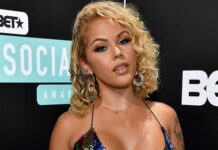Agile product delivery has gained increasing attention as an approach for organizations to be more responsive to shifting customer needs and market conditions. While agile encompasses numerous frameworks and methodologies, all with one common focus: providing value quickly to customers. A PSPO Certification could help organizations develop a set of competencies to enable them to work agilely.
Today’s rapidly shifting business environment requires companies to adapt quickly in order to remain relevant and competitive. Scrum has gained widespread adoption due to its proven effectiveness at improving speed, quality and team collaboration across teams.
In this blog, we will outline three components that make agile product delivery effective as a strategy; but first let’s understand its popularity briefly.
Benefits Of Agile Product Delivery
Agile product delivery approaches are increasingly preferred over more traditional approaches because they allow teams to adapt more rapidly to changing market conditions and customer demands. Here are some benefits associated with agile product delivery:
- Increased Customer Satisfaction: By involving customers in the development process and delivering products in smaller, incremental cycles, agile product delivery ensures that the end result meets customer expectations.
- Faster Time-to-Market: Agile product delivery allows teams to deliver new features and functionality quickly and frequently, enabling organizations to respond to market changes faster and gain a competitive advantage.
- Greater Flexibility and Adaptability: Agile product delivery encourages collaboration, continuous feedback, and experimentation, allowing teams to adjust their approach and pivot as needed.
- Higher Quality Products: The agile approach emphasizes continuous testing and refinement, which leads to higher quality products and reduces the risk of costly errors.
- Improved Team Morale and Engagement: Agile product delivery encourages teamwork, autonomy, and accountability, which can improve team morale and motivation.
3 Dimensions of Agile Product Delivery
The three dimensions of Agile Product Delivery include Customer Centricity & Design Thinking, Develop on Cadence; Release on-Demand, and DevOps & Continuous Delivery Pipeline.
Let us understand each dimension in detail to have a clear understanding.
- Customer Centricity & Design Thinking
Agile product delivery puts the customer at the center of everything it does. Understanding customer needs and designing products accordingly begins with design thinking – an approach which emphasizes understanding problems before developing solutions. By employing customer-centric design methodologies in product creation processes, teams can more likely create products which succeed on the market.
Design thinking involves several steps, from empathizing with customers, defining problems and brainstorming potential solutions, prototyping and testing prototypes until satisfying customer requirements are realized. Through this approach teams ensure they fully comprehend customers’ pain points while designing solutions tailored specifically to meeting them. By focusing on the customer, agile product delivery can create products that provide real value.
- Develop on Cadence; Release on-Demand
Agile product delivery is an iterative process that involves developing products in small increments or sprints. Each sprint typically lasts two to four weeks and involves developing a working product that can be tested and reviewed by stakeholders. This process allows teams to get feedback early and often, which helps them improve the product over time.
To ensure that the product is delivered on time, teams follow a cadence or a regular rhythm of work. This rhythm ensures that the team stays on track and delivers the product on time. However, agile product delivery also allows for flexibility in release dates. If a product is ready for release earlier than expected, it can be released on-demand. This ensures that the customer receives the value as soon as possible.
- DevOps and Continuous Delivery Pipeline
Finally, agile product delivery relies on a DevOps culture and continuous delivery pipeline. DevOps is a culture that emphasizes collaboration between development and operations teams to improve the speed and quality of software delivery. By breaking down silos between teams, DevOps allows for faster and more efficient software delivery.
Continuous delivery (CD) is a methodology designed to enable teams to release software rapidly and reliably, by automating build, test, and deployment process in an effort to reduce errors while speeding up delivery timeframe. By employing CD pipelines teams can deploy new features or updates quickly without incurring errors during deployment process.
With Agilemania Agile Transformation Services, businesses will be able to cope with increased market disruption and competition.
Conclusion
Agile product delivery is an efficient methodology designed to speed up product deliveries while increasing quality and customer satisfaction. By placing emphasis on customers and adhering to regular cadences with DevOps/Continuous Delivery Pipelines teams can design products with real value for their target audiences – whether this means developing software products or physical ones! Introducing agile product delivery into your organization may help stay ahead of competition while meeting customer demands more effectively.














